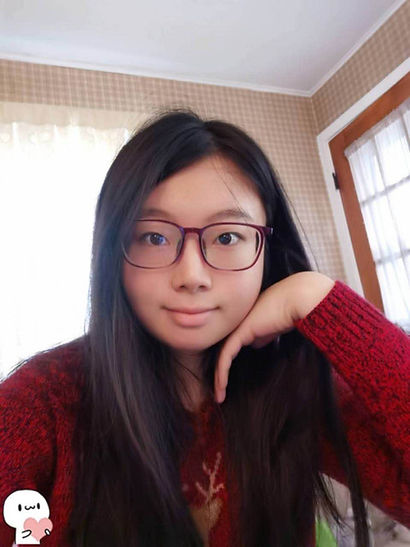
2025 - 2026 Calendar.pdf
文化班旨在帮助母语为非汉语的学生从汉语基础开始学起,强调听说能力的训练和培养,从而提高语言交流技能。学习认识汉字为辅,从简单的汉字笔画入手,学习汉字的结构和一些常见字。使用教材为北京语言文化大学出版社出版的轻松学中文少儿版,和轻松学中文进阶版。

文化一班(5-7岁)
授课老师:赵如歌
招生对象:
教材: 轻松学中文少儿版 2a 2b
Ms. Zhao graduated from Beijing Language and Culture University with a major in Teaching Chinese as a Foreign Language and obtained a master’s degree in TESL from Penn State University. She has three years of teaching experience at universities in China and the United States. Teacher Zhao is youthful and energetic, with a passion for teaching. She is willing to interact with children, allowing them to learn Chinese in a relaxed and joyful atmosphere.
课程简介
课程设计及学习目标:
1.学习简单的日常问候,自我介绍。
2.学习数字。
3.学习动物,食物等日常名词和“大小多少”等简单的形容词。
4.随季节介绍中国的节日文化,如“端午节”“中秋节”等。


文化二班
授课老师:廖一鸣
招生对象:
教材:

文化二班(7-9岁)
任课教师:庞力祺
招生对象:
教材:文化二班(7-9岁)
In 2023, Ms. Pang obtained a master’s degree in Chinese teaching from CSU and will be teaching Chinese at a high school in Cleveland starting in 2024. Teacher Pang joined the West Lake Chinese School family in 2023 and enjoys the time spent in the classroom with each child. Learning through entertainment and having fun while learning. Ms. Pang is dedicated to helping each child experience the joy of learning Chinese, increasing their enthusiasm for studying the language, and feeling the happiness that comes with it. While building a strong foundation in Chinese, maintaining a positive and upward spirit. Teacher Pang's message: isn't learning a language a two-way journey? To learn out of love for Chinese, and to love Chinese through learning. Please enjoy your journey in the world of Chinese.
课程简介
课程设计及学习目标:
1.学习由数字引申出的日常对话:今天星期几?几月几号?你的生日是几月几号?
2.学习介绍自己的家庭成员:我家有几口人,都有谁,都是哪国人。
3.学习简单的动词组:画画,玩游戏,玩玩具火车。在此基础上使用问句和回答,形成对话。
4.学习颜色,文具,学校等有关的更多词汇。在句型里使用这些词汇说1-3个短句子。
5.学习汉字笔画,学写简单的汉字。(日,天,土,田,大,小,人,口,手)
6.介绍更多的中国传统节日和文化,例如十二生肖。

�文化三班 (9-10岁)
授课老师:张丽娟
招生对象:
教材:轻松学中文少儿版 4a 4b
张老师获得过克利夫兰州立大学教育学硕士学位,并持有俄亥俄州K-12中文教师执照。近二十年来,张老师在美国和中国的公立学校教授中文,积累了丰富的教学经验,对多元化
的教育环境有了深入的理解。在教学中,张老师注重多元化的教学方法,结合游戏、故事和音乐等元素,激发学生的学习兴趣,培养他们的语言能力和文化理解。她的教学理念是“寓教于乐”,相信通过互动和创意的方式,能够让学生在轻松愉快的氛围中掌握中文。张老师期待与大家共同探索中文的魅力,欢迎加入她的课堂。
课程简介
课程设计及学习目标:
1. 在前四册书的基础上扩展更多的日常对话,能进行基本的日常交流。例如:你叫什么名字?你几岁了?你上几年 级?你的生日是几月几号?你家有几口人?你住在哪里?你的(你家人的)电话号码是多少?等等
2. 能够介绍自己的兴趣爱好,用主谓宾短句描述日常生活。例如:我七点起床,我八点去学校,我坐校车上学,我午 饭吃炒面。
3. 本两侧书有新增词汇80-100个,学习更多的生活词汇,如天气,方位等。
4. 学习用动词说完整的句子,并提出问题,或者准确的回答问题。例如:你喜欢上体育课吗?我不喜欢吃草莓。我可 以玩游戏吗?你会骑自行车吗?他们正在公园玩沙子。
5. 学习简单的偏旁部首,掌握部首的含义。(氵 口 犭 辶 艹,广 扌)


文化四班(10-13岁)
授课老师:邓晓静
招生对象:
教材: 许瑶坤
Teacher Deng Xiaojing graduated with a bachelor’s degree in accounting from Zhongnan University of Economics and Law. She later moved to the United States with her husband. In 2016, when her child entered West Lake Chinese School, he, being a child raised in an English-speaking environment, steadfastly refused to learn Chinese, and his grades were quite poor for a while. However, after timely communication with his Chinese teacher, Xu Yaokun, and providing appropriate guidance at home, his grades improved rapidly. More importantly, he began to enjoy learning Chinese and fell in love with traditional Chinese culture. In 2018, under Teacher Xu's recommendation, I joined the teacher team at West Lake Chinese School! Through eight years of experience in Chinese teaching, Teacher Deng has realized that maintaining children's interest in learning Chinese is crucial, as is keeping communication with parents about their children's progress in learning Chinese. Teacher Deng sends a message: Children born in the United States have very few opportunities to be exposed to Chinese. I hope to work together with families to create more opportunities for children to engage with Chinese language and traditional Chinese culture.
许瑶坤
课程简介
课程设计及学习目标:
1. 本册书有500左右的词汇量。包括一些中级�难度的名词,动词,和更多的虚词。本册书会系统学习组句的语法。学 生除了要理解词汇意思外,要会使用语法造短剧和长句。例如:是。。。的(我是去年去中国的。)可以。。。还可 以。。。(我们可以一起玩游戏,还可以去看电影。)比。。。(我的卧室比我弟弟的大)
2. 在日常生活的话题中使用学过的词汇,句子。例如有关天的的介绍,季节的介绍,有关个人爱好,家庭成员的爱 好,身体状况的描述等。
3. 学习中级难度的偏旁和汉字。(酉,舟,弓,斤,户,鱼,虫,门)
4. 通过听力练习和会话练习达到巩固词汇,灵活运用的目的。


文化五班(12-15岁)
授课老师:
招生对象:
教材:轻松学中文第三册
邓晓静老师,本科毕业于中南政法大学会统核算专业。后随丈夫移居美国。2016年等老师的孩子入读西湖中文学校,由于他是全英文环境的孩子,开始坚决的拒绝学习中文,成绩一度很差。后来及时和他的中文老师许瑶坤老师沟通,在家适当的辅导,让他的的成绩提升很快,最重要的是让他喜欢上了学中文,而且爱上了中国传统文化。2018年经许老师推荐,我加入西湖中文学校老师团队!经过这八年的中文教学经验,邓老师认识到保持孩子学习中文的兴趣很重要,保持和家长关于孩子中文学习进度的沟通也很重要。邓老师寄语:美国出生的孩子,接触中文的机会太少
,我希望和各位家中一起,共同努力,尽量给孩子创造更多接触中文以及中国传统文化的机会。
课程简介
课程设计及学习目标:
1. 本册书共有660个左右的词汇。词汇语法和会话主题难易平衡分布。初级阶段的出现的词汇会在不同的情景 练习中反复出现,以巩固学习效果。
2. 本册书对听说读写的要求全面提高,需要更好的配合练习册,以多样化的练习,丰富的阅读材料,以及对 中国历史文化的介绍来复现,复练,巩固课本中的内容。
3. 学习在各种话题中使用长句,整句。介绍性格:你有困难的时候,朋友可以帮你。介绍学校生活:每天放 学以后,我都有课外活动。晚饭以前,我做一个小时作业。
4. 学习各种情景和主题的对话:有关学习汉语的对话,课外活动的对话,饮食习惯的对话,外出问路的对话 对话等等。
代课老师
